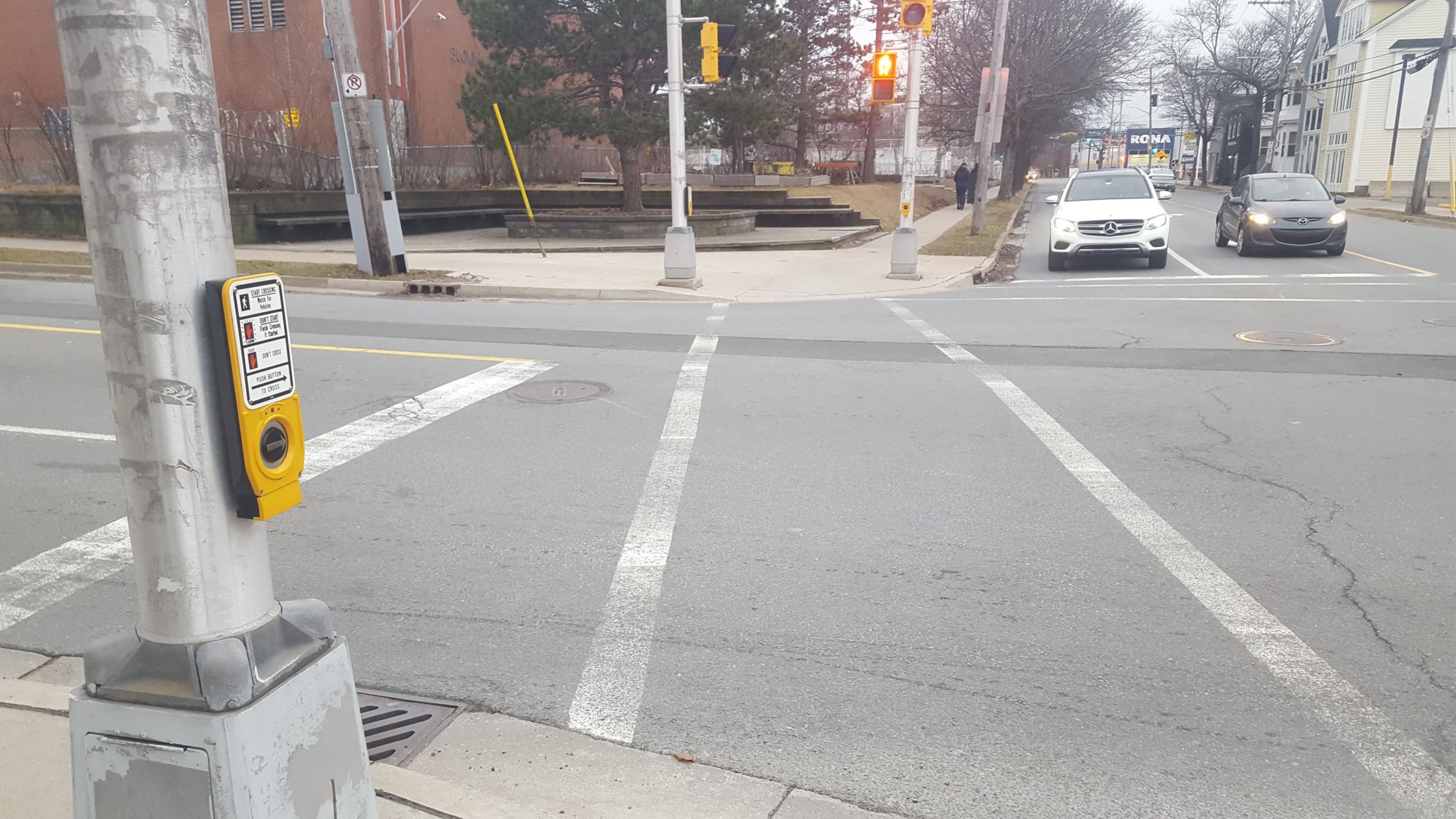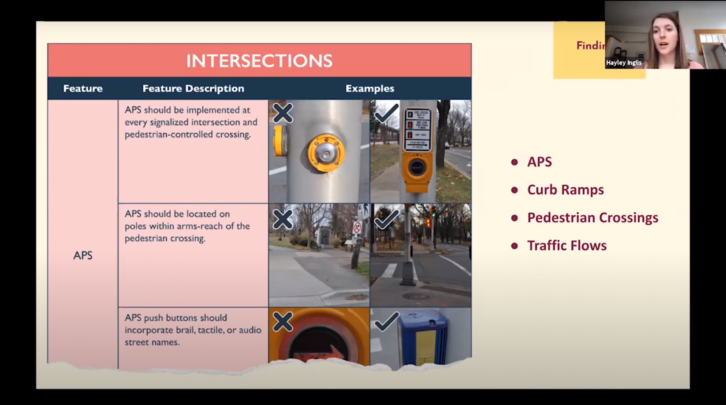Glitchy HRM crosswalk buttons making intersections dangerous for the visually impaired
Sighted individuals might not give these crosswalk buttons much thought, but they are a lifeline for other pedestrians.

caption
An Accessible Pedestrian Signal in Halifax.Advocates say broken crosswalk buttons in Halifax Regional Municipality are making streets dangerous for visually impaired pedestrians.
Last week, the municipality’s Transportation Standing Committee heard from Milena Khazanavicius and Bernard Bessette. The pair presented on inaccessible crosswalks that need to be fixed.
Bernard Bessette is a partially sighted cane user, and Khazanavicius has been visually impaired for 26 years. She depends on her guide dog – a German shepherd named Louis – to get around the city.
A research project presented by Dalhousie University last month surveyed the visually impaired and investigated how the accessibility of Halifax’s streetscapes could be improved. The project found that crosswalks are a major source of anxiety for Halifax’s visually impaired residents, with some taking long circuitous routes to avoid Halifax’s problematic intersections.
The project, titled Revealing Barriers: Learning From the Experiences of People With Visual Impairments, recommended clearer construction detours and signage, making steps and glass entryways easily identifiable, and having Accessible Pedestrian Signals (APS) installed – within arms reach of the crosswalk – at every signalized and pedestrian-controlled intersection.

caption
A research project presented by Dalhousie University last month.APSs are crosswalk buttons designed to make crosswalks accessible for the visually impaired, with a continual ticking noise to help locate them, tactical feedback that a signal has been received, and then another sound indicating the crosswalk signal has been activated.
During last week’s committee meeting, Khazanavicius and Bessette discussed a variety of intersection accessibility issues, including faded crosswalk markings, buttons placed out of reach of the crosswalks, and colour schemes that can camouflage the buttons. The main issue Khazanavicus and Bessette found is “consistently inconsistent” functionality.
When these buttons don’t work properly, Bessette said he has to “listen to traffic to indicate if you can cross or not,” and then step out when it sounds safe.
Khazanavicius said sometimes the buttons won’t make the locator noise, they don’t give feedback that they’ve been pressed, or they simply don’t trigger the crossing.
“For whatever reason, on any given day, you would return the next day and it would be working” she said.
This is especially concerning in a city so dangerous for pedestrians. Two weeks ago David Gass, a family doctor and faculty member at Dalhousie University, died after being struck by a vehicle while crossing an intersection with traffic lights.
Accidents like this are too common in Halifax. In 2019, the city had 17 pedestrian deaths, and 815 injuries from vehicle collisions; in 2020 there were still five deaths, and 606 injuries, despite COVID-19 keeping residents at home.
It has been a little over a year since Khazanavicius, Bessette and Bill Campbell – president of Walk ‘N Roll Halifax – got together and became serious about advocacy after watching issues persist for years with little action.
“The blind and the partially sighted are sort of left behind as an afterthought,” Khazanavicius said in an interview after the meeting.
The three of them began taking notes on intersections, and calling in repairs for every one they encountered with an issue.
“(Municipal services) know us by name,” Khazanavicius said.
This time last year, they found that 23 out of Halifax’s 76 APSs had issues. According to Khazanavicius’ presentation last week, only two have been fixed since then.
This is frustrating for the group, as when the repair team shows up the next day, the APSs are often working again, leaving the repair team to suggest that the pedestrians aren’t pressing the buttons long enough.
“I’ve been doing this for 26 years. I think I know how to push a button,” Khazanavicius said.
Even on the morning of the presentation, while crossing Connaught and Quinpool roads, Khazanavicius found another APS with issues.
“If TPW (Transportation and Public Works) is kindly listening, there’s a problem there too,” Khazanavicius said during her presentation.
In response to the presentation, Brad Anguish, executive director of Transportation and Public Works for Halifax Regional Municipality, has committed to increased inspections of APSs.
While Khazanavicius is happy about this response, she said her recommendation that the technical issues be investigated and fixed throughout Halifax wasn’t addressed.
“We’ve still got a long way to go, but we’ve got our foot in the door,” Khazanavicius said during an interview.
For Khazanavicius, these improvements are not only essential for the visually impaired, but they also increase crosswalk safety for all of Halifax’s pedestrians.
“When you build an environment for people who are blind and partially sighted, you end up encompassing everyone,” Khazanavicius said.


s
slot pragmatic